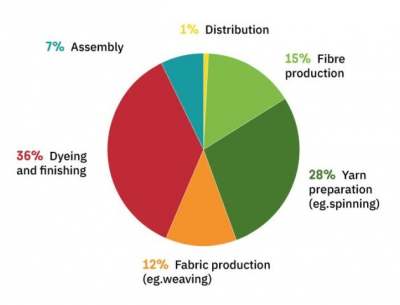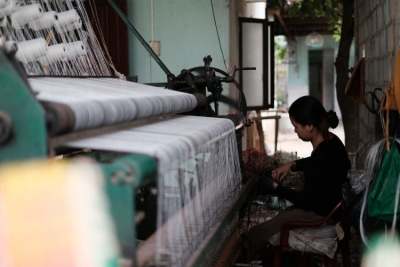What can consumers do to tackle emissions from clothing?
As well as telling fashion brands why you're avoiding shopping with them, there are some other actions (or non actions!) consumers can do to help reduce the climate burden from clothing.
Here are a few of our tips, but do let us know if you have other ways to reduce the climate impact from clothing.
1. Use what you already own (buy less new stuff)
Extending the life of your clothing is the single biggest way you can cut the emissions of your wardrobe.
Waste action charity Wrap has found that the average person owns 118 items of clothing – a quarter of which have not been worn in at least a year. Making use of what you own is the most obvious way to cut your carbon footprint and avoid funding a polluting sector.
Great ways to do this include giving clothing to friends or taking them to a clothes swap, as well as caring for and repairing your clothes to give them a longer life. We have tips on clothing reuse and repair in a separate article.
They can also be upcycled into other things once they've reached the end of their wearable life.
2. Buy pre-loved secondhand clothing
As most of the emissions from clothing arise during manufacturing, buying secondhand clothes is a great way to cut carbon. There are lots of options for buying secondhand, and we have a dedicated article to help you navigate them.
We also look at the rise of charity shops and secondhand clothing and assess which charity shops are the most ethical.
3. Avoid fast fashion brands
The rise of fast fashion has had devastating consequences, from its reliance on plastic fabrics and its enormous carbon footprint to its erosion of workers’ rights. Brands like Boohoo and Pretty Little Thing put out hundreds of new styles a day at impossibly low prices, encouraging us to buy poor quality items worn only a handful of times.
Avoiding these kinds of brands, and opting for slower ethical fashion when buying new will help to cut emissions and ensure your money goes to a company trying to do something different.
We have 10 tips to help you ditch fast fashion in a separate article.
4. Wash clothes at a lower temperature and do not tumble dry
According to the Guardian, “Washing and drying a load every two days creates around 440kg of CO2e each year, which is equivalent to flying from London to Glasgow and back with 15-mile taxi rides to and from the airports.”
How often you wash your clothes, and what temperature you choose, can therefore have a significant impact.
Tumble drying is the worst culprit. A 40 degree wash combined with a tumble dry will generate 3.5 times the emissions than if the clothes are air dried.
Additional research by Josie Wexler.









